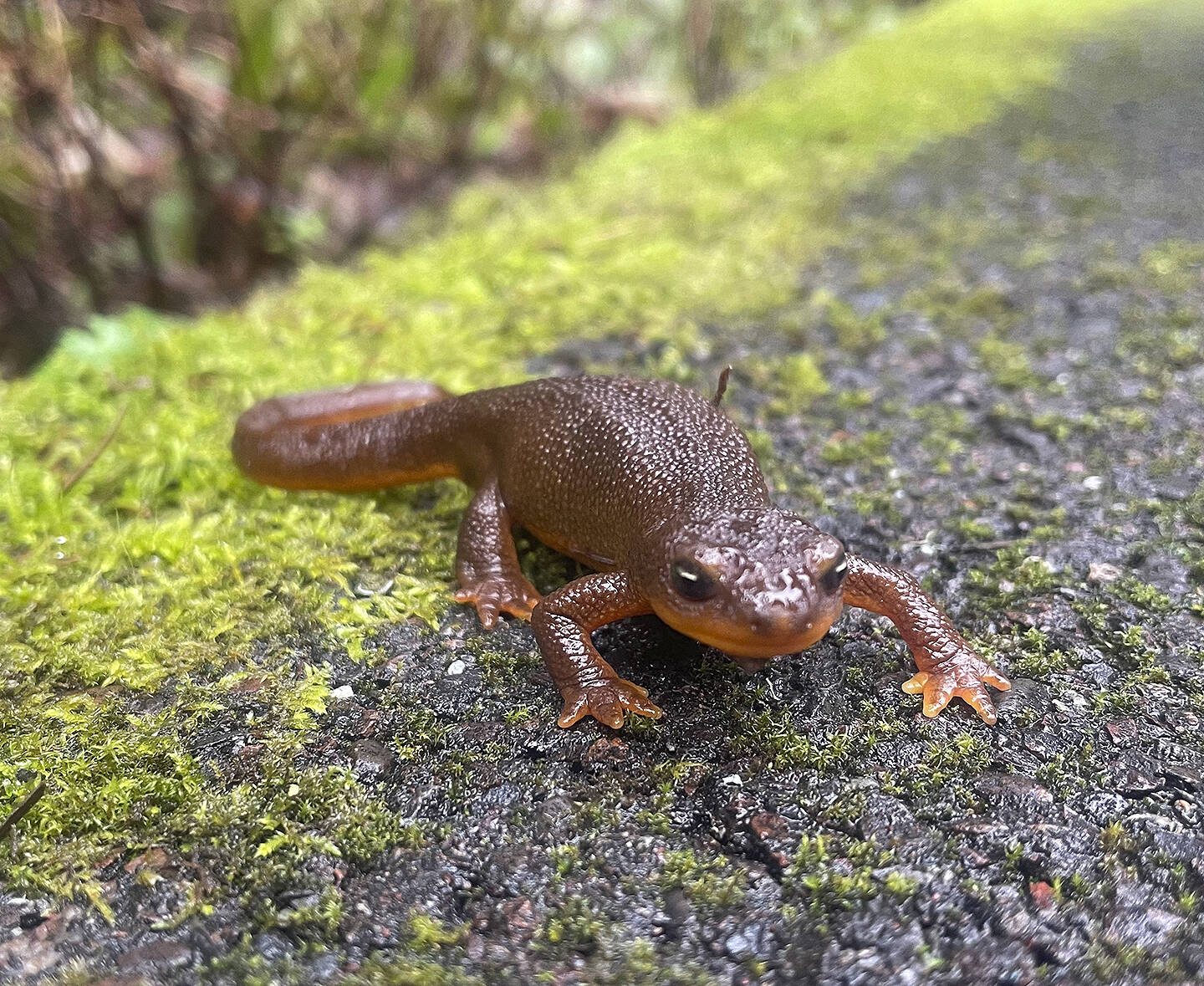The life cycle of salmon is the heartbeat of the Pacific Northwest, but it’s not the only watery animal that undergoes an incredible journey and massive transformation.
On Bainbridge Island, the resident population of Rough-skinned Newts, a rusty-brown salamander native to the West Coast, is beginning a great migration back to their natal ponds to spawn.
Amphibians are a critical part of the ecosystem and an indicator of water quality, but when it comes time to migrate, they’re at the mercy of traffic. But Kathryn Arnold, founder of WildHope magazine, has a plan. For starters, she and her neighbors around Port Blakely have become newt crossing guards.
“When I first stumbled upon the mass newt migration on Rockaway Bluff Road, it opened up a whole new area of interest to me,” Arnold said.
She drew up a map of observations in her neighborhood, with reports from other residents, and distributed it to neighbors. “People really appreciated it — they’d been doing it for years, but they had no idea how many areas the newts were coming from.”
Arnold’s effort to raise awareness of migrating newts and other amphibians grew into curiosity. Outside of Port Blakely, there must be other migrations, she said. After all, “Bainbridge Island is one big forested watershed, criss-crossed with roads.”
As it turns out, that hunch may make scientific history on BI. Arnold has joined a landmark scientific collaboration with the Bloedel Reserve, guided by the Woodland Park Zoo, to assess the health of amphibian populations across Western Washington.
The Reserve actively pursues habitat improvement projects, like the Buxton Bird Marsh and Pollinator Meadow, and wildlife habitat enhancement on Reserve grounds. However, this is the first time that it has participated in an amphibian-focused citizen science project, project lead and Reserve gardens manager Haley Wiggins said. No such data has been gathered before on the island.
“We suspect that the prevalence of wetland and forest habitat across the grounds has supported robust amphibian populations for a long time,” Wiggins said. “However, this is the first time we’ve attempted to monitor amphibians, so we can’t say if abundances have either increased or decreased over time.”
The study will go on indefinitely, Wiggins said, and data from long-term tracking of amphibians is certain to shine light on the effort. But until then, the rough-skinned newts still need a solution.
Arnold cited a project in Petaluma, CA that rescued over 7,400 amphibians in fall 2023: the Chileno Valley Newt Brigade. The brigade is a combined effort between volunteers with buckets and headlamps who ferry newts across the road during peak migration time, and newt-friendly infrastructure in the form of an underpass.
“We’re able to stop and help the newts when we can, but it’s really a stopgap measure. We need a non-human solution,” Arnold said.
As far as humans are concerned, however, BI residents have a huge role to play in newt protection. Arnold encouraged residents to keep a look out for newts and other amphibians while hiking or walking, and to carefully move any critters across the road in their intended direction. She also highlighted the importance of obeying the speed limit — “you can see [newts] on the road when you’re driving thirty and under.”
Above all, however, Arnold called for any sightings to be logged in iNaturalist, the free citizen-science app. “There’s a huge amphibian biodiversity here,” Arnold said. “All that iNaturalist data will become science.”



